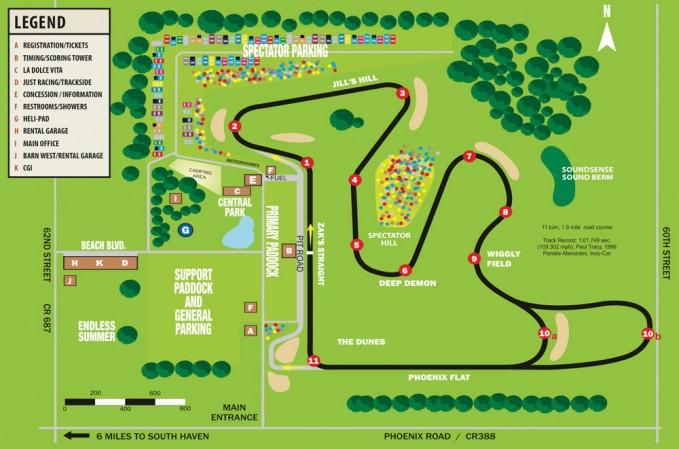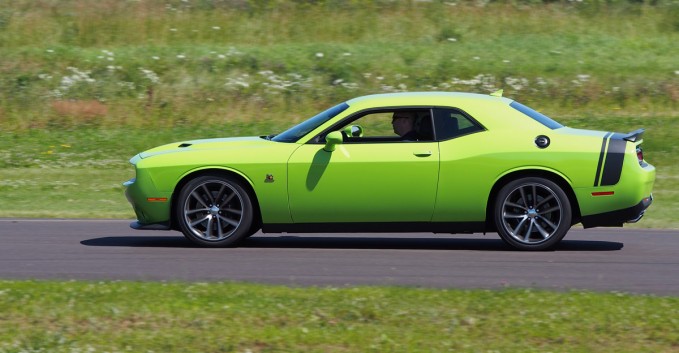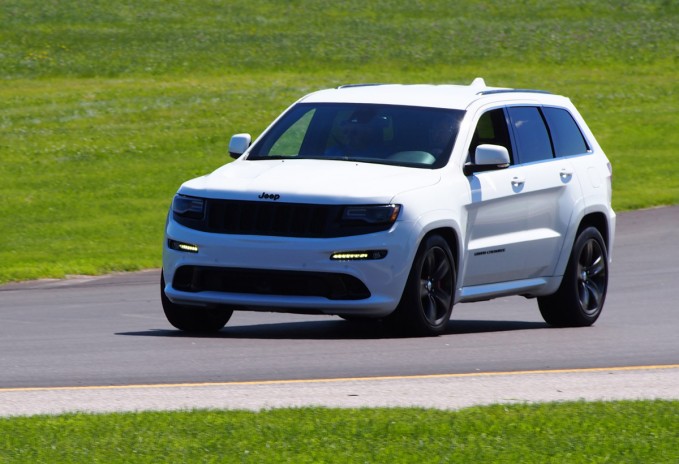“Just ease on the brakes,” my driving instructor says while slowly clenching his fist, demonstrating the desired technique.
Unfortunately, that level of finesse is easier said than put into practice; the Dodge Charger Hellcat I’m piloting is equipped with massive Brembo binders that have more bite than a great white shark. Still, the importance of smooth deceleration was just one of the many things I learned at the MAMA Performance Driving School a few weeks ago.
Love Your MAMA

None of this would have been possible without the generous assistance of Fiat Chrysler Automobiles, which sponsored the event. When I heard FCA was providing vehicles, I expected them to field some Dodge Darts or perhaps a handful of but I couldn’t have been more wrong.
SEE ALSO: Fastest Lap Times at the AutoGuide.com Test Track
Like trying to teach multivariable calculus to preschoolers, they brought out the big guns. SRT versions of the Challenger coupe and Jeep Grand Cherokee were on hand, as well as a horde of Hellcat Chargers, each with a red key fob and all 707 horsepower on tap. These cars aren’t even magnum caliber; they’re more like field artillery. The guys in Auburn Hills are even crazier than they seem, though fortunately, all of their machines survived the event unscathed.
A Touch of the Ginge
Our playground for this half-day event was Gingerman Raceway in far-flung Western Michigan. On paper, this track looks fairly straightforward with a few turns, a couple straight-aways and all of the topographical variation of a blowing lane. However, appearances are deceiving, because it’s actually an extremely technical track that takes countless laps to really figure out.
This contrasts starkly with Road America, a circuit I’ve lapped more than any other. Its lengthy four-miles are much more point-and-shoot; power is king at this Wisconsin venue. In comparison, Gingerman seems to pack more quirks and idiosyncrasies into half the space. It’s a track that requires patience and finesse, not just the ability to press the accelerator through the floorpan.
The Take Away
Anyone can slither their way around a racing circuit, but to do it at speed without spinning, exiting the course or smashing into a tire wall is another story entirely. The biggest thing I learned from this experience is the importance of being smooth.
As my instructor emphasized, you ease on the brakes while still traveling in a straight line, gradually applying more stopping power the closer you get to the corner. Once enough velocity has been eradicated, you start to turn the wheel while transitioning back to the accelerator, applying just enough giddy-up to maintain speed through the turn. After nailing the apex, you can start applying more and more throttle as the wheel unwinds, going wide open again when the car is pretty much pointed straight again. Got all that? If so, just lather, rinse and repeat.
The importance of smoothness cannot be understated. Not only does it lead to quick lap times, but it also keeps you out of trouble. If you jam on the brakes, jerk the steering wheel or mash the accelerator abruptly, you stand a good chance of upsetting the vehicle’s chassis, which is a big no-no. Remember, just four tiny contact patches are all that keep your rump on the road, do anything drastic at the wrong time, and suddenly you’re headed into the weeds, or worse, a guardrail, and they’re a lot less forgiving than a few tufts of grass.
SEE ALSO: Seven Car Features That Drive Us Insane
Another critical lesson I learned during my hot laps at Gingerman is the need to look ahead. Most drivers only pay attention to what’s going on a few feet ahead of their bumper. This may be fine while commuting to work, but it doesn’t cut it on a track. Looking far ahead and around corners so you know where the car needs to be in advance makes driving at speed more manageable. This means you even have to peer through the side glass at times, which takes a little getting used to.
My final big take-away from this experience is the need to apex late in corners. In racing, an apex is the innermost point of a turn. Hitting this spot as late as possible is generally the fastest way through a corner because it gives you the straightest possible line. Keep in mind, this isn’t necessarily the shortest distance through a turn, but it’s the fastest and that’s what counts in racing.
Pretty much any time spent on a track is going to be grand, but with proper training, it only gets better, and if you’ve been paying attention, If you’ve got speed in your veins, take a performance driving class; you won’t regret it.











